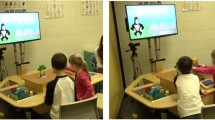Abstract
This paper discusses the design of materials that utilize embedded computational techniques to demonstrate the capacity to learn, adapt and develop responsive behaviors that are shaped over time. The focus is on materials that develop time-based relationships based on a level of ‘experience’ they accumulate from long-term interaction with their users and environment. Materials with ‘computational experience’ are demonstrated with two designs: an interactive rocking chair that utilizes its material properties and computational abilities to manage its own energy production and consumption while providing physical and mental exercises to its user; and an LED-based, reconfigurable display that adjusts its content based on its interaction with its user while monitoring its internal conditions, environmental factors and usage. These examples are used to discuss the design of computational ‘styles’ for materials that would not only allow them to express signature characteristics embedded in their physical properties and computational behavior but also function as features that would evolve in response to interaction patterns and accumulated experiences. Throughout the paper, behavior-driven material practices are presented and their potential to influence the look, feel and functionalities of products and spaces are discussed.








Similar content being viewed by others
References
Williams Brian C, Ingham M, Chung SH, Elliott PH (2003) Model-based programming of intelligent embedded systems and robotic space explorers invited paper in Proceedings of the IEEE. Spec Issue Modeling Des Embed Softw 9(1):212–237
Wiener N (1965) Cybernetics: or control and communication in the animal and the machine, 2nd edn. MIT Press, Cambridge, pp 169–180
Arkin RC (2000) Behavior-based robotics. MIT Press, Cambridge
Arkin RC (2000) Behavior-based robotics. MIT Press, Cambridge, pp 31–62
McFarland D (1981) The Oxford companion to animal behavior. Oxford University Press, Oxford, p 411
Williams BC, Ingham M, Chung S, Elliott P, Hofbaur M (2004) Model-based programming of fault-aware systems. AI Magazine 24(4):61–75
Oliver M, Williams BC, Ingham M (2005) Diagnosis as approximate belief state enumeration for probabilistic concurrent constraint automata, Proceedings of the Twentieth National Conference on Artificial Intelligence (AAAI-05), Pittsburgh, PA, July 2005, pp 321–326
Telhan O (2008) Towards a material agency: new materials and new behaviors for urban artifacts. In the proceedings of the first international conference on critical digital: what matter(s), Harvard University Graduate School of Design, April 18–19, 2008
Arkin RC (2000) Behavior-based robotics. MIT Press, Cambridge, p 306
Arkin RC (2000) Behavior-based robotics. MIT Press, Cambridge, p 308
Horowitz E, Sahni S, Rajasekaran S (2007) Computer algorithms in C++, 2nd edn. Silicon Press, New Jersey
For energy harvesting specification, see Volture Piezo Energy Harvester (v21bl) from MIDE Technologies. Accessed August 2, 2009: http://www.mide.com/products/volture/v21bl/v21bl.php
Telhan O (2007) Social sensing and its display. Submitted to the Program in Media Arts and Sciences, School of Architecture and Planning, at the Massachusetts Institute of Technology
Coelho M (2007) Programming the material world: a proposition for the application and design of transitive materials (paper presented at the workshop on transitive materials: towards an integrated approach to material technology, 9th International Conference on Ubiquitous Computing, Innsbruck, Austria, 16–19 Sep 2007)
Arroyo SP, Rossano A, Kebel I (2007) Emerging technologies and housing prototypes. Black Dog Publishing, Madrid
Author information
Authors and Affiliations
Corresponding author
Rights and permissions
About this article
Cite this article
Telhan, O. Materials with computational experience and style. Pers Ubiquit Comput 15, 151–160 (2011). https://doi.org/10.1007/s00779-010-0314-8
Received:
Accepted:
Published:
Issue Date:
DOI: https://doi.org/10.1007/s00779-010-0314-8




